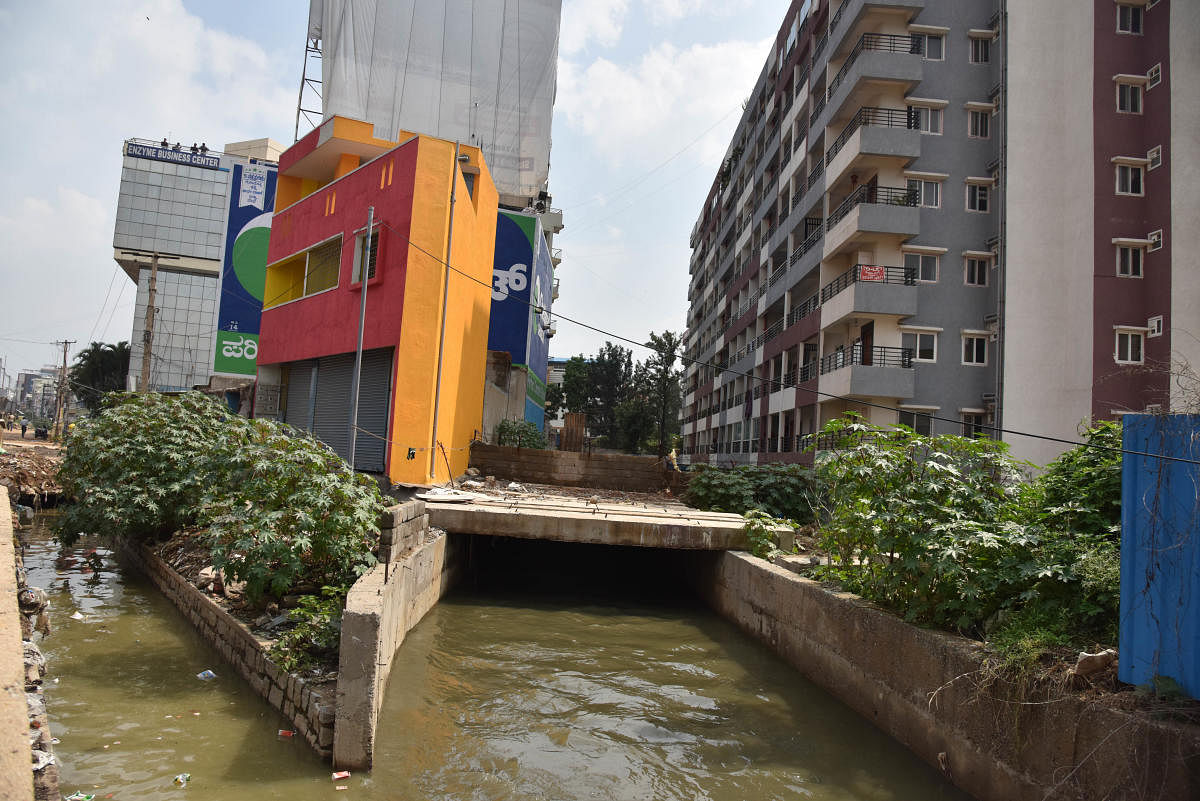
It was a Saturday, two years ago, when 61-year-old Pradeep Rao was shocked to see a bulldozer roaring at his gates. He was told his house, in which he had lived for a decade, was illegal because it encroached upon a storm water drain (SWD) or Rajakaluve.
In August 2016, Rao, a resident of Avani Sringeri Nagar in Arkere near JP Nagar in South Bengaluru, had much of his house, duly ratified with legal documents, razed to the ground. “I showed them the approved building plan. They said it was a bogus document,” he said.
The nightmare was no different for Murali J, a senior executive, who waited nearly five years to build his dream house —a villa at Shubh Enclave, off Sarjapur Road in Southeast Bengaluru. Only two months after he moved in, municipal authorities came knocking on his door with a bulldozer. In a matter of hours, his villa was reduced to rubble. The corrupt nexus between officials and builders had led to innocent people buying properties that encroaches on drains. Most of them were not aware of the violation.
Scores of families were rendered roofless overnight as the Bruhat Bengaluru Mahanagara Palike (BBMP) went on a demolition rampage to clear drain encroachments, two years ago. At least 141 buildings across 29 acres were razed. What triggered the demolition rampage was the heavy flooding that occurred in several parts of Southeast Bengaluru due to severe rainfall in July 2016. The deluge the city suffered was due to the encroachment of the structures that were meant to drain storm water.
storm water drain had resulted in severe flooding in this area. (DH Photo/ Ranju P)
Drain encroachments in Bengaluru, which has a Rajakaluve network spanning 1,090 km, worsened ever since alterations in wetlands started in 2004 and aggravated after 2008. At present, about 501 acres of drains are under encroachment. According to an Indian Institute of Science report, Bengaluru has seen 1005% concretisation resulting in 88% decline in green spaces and 79% in wetlands since 1973, thanks to unabated urbanisation.
Buildings that were demolished were those that officials themselves had allowed to come up. Under pressure, the then chief minister Siddaramaiah ordered a crackdown against officials who were responsible for permitting construction of buildings on SWDs.
A preliminary inquiry pinned 20 officials — from the BBMP, Bangalore Development Authority (BDA), the Department of Town & Country Planning and the Public Works Department — as having violated rules while permitting construction of residential properties. It is illegal to construct, or allow construction of, properties on storm water drains or within a certain distance. Seven complaints seeking criminal action against the 20 officials and some builders were lodged with the Bangalore Metropolitan Task Force (BMTF).
However, in the past two years, many government officials and builders have escaped criminal action for encroaching storm water drains in what looks like a major cover-up that has come to light.
Documents with DH show that till early this year, the BMTF filed ‘B’ reports in six of the seven cases, giving a clean chit to 18 of the 20 officials and more than 18 builders or developers. A ‘B’ report is filed when an investigation agency finds that no offence can be made out against the accused due to lack of evidence. This meant almost all the offenders got away without facing any criminal action.
Officials absolved themselves by placing the blame on the Revised Master Plan (RMP) 2015 among other excuses, documents show. The RMP 2015 is a blueprint that dictates the city’s growth over a 10-year period.
Curiously, officers who were given the clean chit by the BMTF, have been found guilty by the Urban Development Department for approving building plans in violation of buffer zone and by neglecting the presence of storm water drains that provide connectivity between the city’s lakes, according to charge sheets the government has framed against them. The charge sheets claim to have documentary proof and witnesses incriminating the officials, who stand to face a departmental inquiry under the Karnataka Civil Services (Conduct) Rules, 1966. This, however, will only lead to civil action.
It turns out that the erring officials used the flaws in urban planning to their advantage in order to get away without facing any criminal action.
The RMP 2015 classifies drains into primary, secondary and tertiary, with a buffer of 50m, 25m and 15m respectively, measured from the centre of the drain. Such drains identified in the RMP 2015 are called Newly Identified Drains.
Officials got away saying no drain was spotted in the RMP 2015 maps at the location where there was an encroachment. And apparently, there is no prescribed buffer zone that builders should provide for drains that are not seen in the RMP maps. It may be noted here that officials made no mention of the May 2016 order of the National Green Tribunal that barred construction activity 50m from the edge of primary Rajakaluves, 35m from secondary Rajakaluves and 25m from tertiary Rajakaluves. Drains not recognised by the RMP are referred to as Defined Rajakaluves - they are visible only in village maps that date back to Bengaluru’s first survey commissioned by the British way back in 1902. This paved the way for meticulous village records - tippani (detailed drawing), pakka (summary), pahani (rights, tenancy and crops) and an atlas giving sub-survey level maps.
Bizarrely, officials washed their hands off by feigning ignorance about the importance of village maps. The Bangalore Development Authority, when asked whether village maps were relevant vis-a-vis RMP maps, said there was no clarity. “It needs an opinion from the Law department,” the BDA stated. This is a contradiction because officials themselves admit that RMP maps are prepared based on the village maps. While giving the permission, it is clear that the officials were well aware that the structures will encroach upon the SWDs.
Experts who deal with land and revenue matters have challenged this. “That’s a silly point. There are court orders and committee reports that uphold the supremacy of village maps,” Leo F Saldanha, an environmental lawyer and coordinator at Environment Support Group, said.
Officials also took shelter under a circular the BBMP issued in 2008. “In cases where sites have been duly purchased with registered Khatas and site owners are paying property tax, building approvals are to be given as was accorded earlier,” stated the circular, and officials claimed they only acted as per this to permit the buildings to come up.
Other reasons for the ‘B’ reports include that the encroachment had been cleared already and the non-cooperation of the BDA and BBMP in sharing information. Most of the ‘B’ reports concluded that the complaints were filed based on ‘wrong information’ and ‘poor understanding of the law’.
Having caught the whiff of a cover-up, the Urban Development Department has shot off a stinger to the Home Department: “If this is the fate of complaints filed by the BBMP commissioner based on the chief minister’s direction, what happens to complaints filed by citizens? What about those who lost their property during encroachment removal? Aren’t officials and builders responsible?”
Legal action has been recommended against BMTF officials for the lax investigation and closure of cases. RTI activist Sai Datta, who has been digging the dirt on this issue, is convinced that there has been a cover-up. “If six of the seven complaints, all filed by the BBMP, lead to ‘B’ reports, what does that mean?”
The recent rains in Bengaluru left many localities flooded, a testimony to the fact that there is a dire need to clear encroachments on storm water drains. However, the current administration seems to have turned a blind eye with Chief Minister H D Kumaraswamy announcing that there will be no removal of encroachments under his regime.
READ MORE: Koliwad committee turns a blind eye
